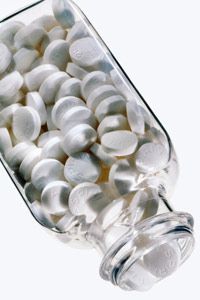Maybe you've notice that more and more often, people ask you if you are tired or not feeling well. When you look at yourself in the mirror, you see creases on either side of your mouth and a little sag in the skin along the jaw line.
It's not your imagination. Your skin is subject to the ravages of the sun, gravity and aging; it's starting to sag and it's become noticeable.
Advertisement
To begin the revitalizing process, you need to understand what causes sagging skin. Then, you need to take steps to minimize exposure to those causes. After that, you can decide what, if any, further treatment you'd like to pursue. A wide range of treatment options exist to give skin a boost, from less invasive solutions, such as topical creams and injectable fillers, to more drastic measures like laser treatments and surgical intervention.
So, if looking tired is getting old and loose skin in rubbing you the wrong way, then read on to learn what causes sagging skin and to discover the treatment that best fits your needs.
Advertisement


